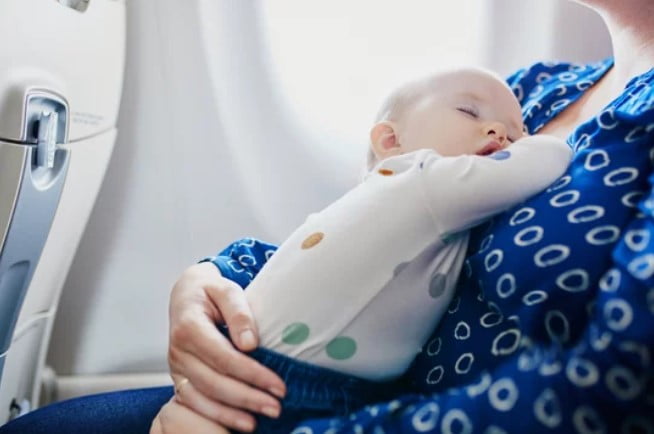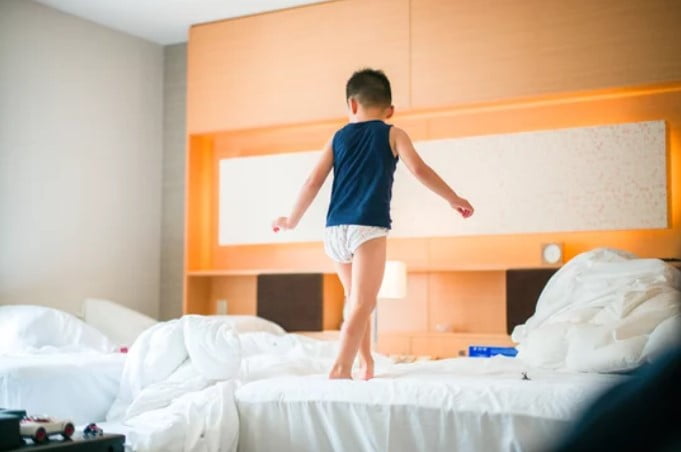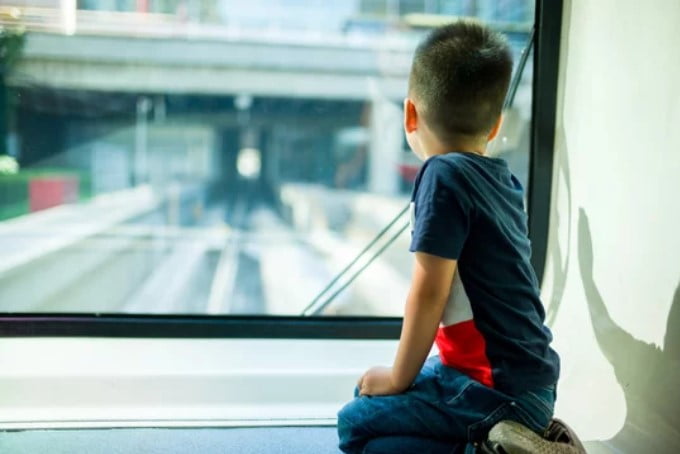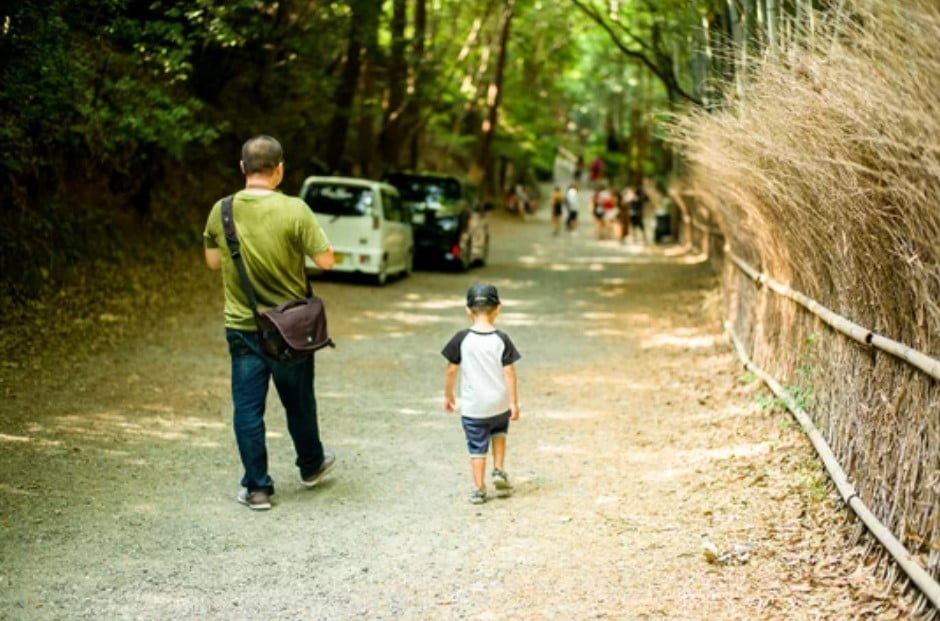Whether it is for half-Japanese families or teenage parents or adults in love with Japan, traveling to Japan with a baby is possible. However, whether you want it or not, it will create any disruption in the baby’s habits. We have the possibility to (hopefully) reduce almost everything else, but only the length of the flight and jet lag remain unavoidable.
Certain babies easily withstand such disruptions, while the vast majority of other babies do not. And it is complicated to plan based on empirical evidence.
Let’s not be overly optimistic or deeply anxious: let’s accept the fact that those who support your trip are mainly experienced travelers with children and, from time to time, are complemented by those who benefit from your departure. And in this environment, there are clearly worse destinations than Japan!
The substantial condition is still to plan your stay in advance to better cope with it and, consequently, reduce unforeseen events and worries once there.
Administration and Stability in Japan | Passport for Children in Japan
All children from Canada, Europe or the United States, from birth to 16 years of age, require their own passport to travel. Your child’s passport will be valid for a maximum of 5 years. An infant’s passport is valid until its expiration date, even after the child turns 16.
You can order your passport online or print the form from the government websites to start the application process. Don’t forget that it may take 4-6 weeks to obtain the final file.
It is also appropriate to check the insurance contract and, most of all, the repatriation conditions, in case something happens.
Choosing the season to go with your baby to Japan | Season to go to Japan
Regarding the time of year for travel, let’s review the highlights:
The hanami period is already going to be quite busy – too busy to add another complexity with a baby.
Summer is quite humid and hot for small children.
2 excellent seasons to visit Japan, according to our own experiences, are:
Throughout the month of May, as soon as the Golden Week ends: temperatures are nicer without being sweltering, the tsuyu (rainy season) has not yet arrived and the greenery is beautiful (especially the azaleas). It is also a time free of tourists.
Mid-September to early October: After the typhoon period, you can enjoy summer and its good temperatures, just before the third tourist outburst of autumn for the maples, Japan’s famous momiji.
Length of stay with a baby in Japan
There are 2 quite opposite opinions about the length of stay.
Those who consider that traveling is already complicated to digest for a small baby have the possibility to choose to stay 1 to 2 weeks in Japan. Others have the possibility to retort that, because they will tolerate all the problems, why not stay longer? They may decide to travel over 3 weeks or more.
Each family will make their own choices based on their knowledge and experience.
Travel to Japan with children | Flying with children | Flying to Japan with children
Choice of flight: With the intention of reducing the flight time as much as possible, a direct flight should logically be the first and wisest choice, since if stopovers are made, they may be too long for children or too short and running with children is not the most appropriate. Only a few companies fly direct:
From Spain: Madrid (Iberia)
From New York: All Nippon Airways (ANA) and Japan Airlines (JAL)
From San Francisco: ANA and JAL
From London: ANA, JAL, and British Airways.
If you decide to land in Tokyo, you should choose flights arriving at Haneda rather than Narita, as this will halve the travel time to your accommodation.
Of course, the higher the class of seat, the more space you will be allocated, for your and your baby’s peace of mind. Therefore, a business class seat will allow everyone to lie down on the seat/bed, which will promote better sleep. For babies up to 9 kg, companies will provide a “bassinet” (a small cradle) and reserved seats: commonly the first row of each class.
- The infant’s rate is dependent on his or her age: Under 2 years old, you pay, at most, airport taxes (about 10% of an adult’s rate).
- Above 2 years of age, the fare usually varies between 25% and 50% of an adult ticket, but the child will have its own seat.
Boarding with a baby | Boarding a plane with a baby
A baby can also carry suitcases in the cabin and in the hold, in addition to the stroller.
The stroller is usually considered an additional piece of luggage that, at world airports, can be used right up to the aircraft doors. There is no need to invest in an expensive cabin-specific model: a traditional stroller will suffice, don’t worry. It is feasible to carry water in a bottle or bottle (notice how hypocritical airports are for the rest).
When going through customs ????, you can pass a control showing the liquid or asking him to drink a little, so they can check that it is water.
On the plane with the baby | Baby on the plane
If your baby has recurrent otitis media or other ear infections, be very careful! It is not likely to consider traveling with a baby who has otitis media, because his ears may not be able to withstand take-off and landing: the suffering is real and the consequences are severe.
Before planning any trip with a baby, it is essential to have a check-up with the pediatrician. To avoid discomfort during pressure changes, having a bottle ready will allow the newborn to calm down during those moments of the flight, since sucking on the bottle or pacifier, or even sucking, the pressure will not be noticeable.
Once on the plane, the staff of most airlines will be attentive to you and your baby. Patience will be necessary in the moments when the newborn does not sleep.
Be prepared to walk the aisles. Depending on the baby’s age, an anime or cartoon on your phone (or on the airplane screen if it’s a long trip) will help put your baby’s mind at ease.
Ideally, try numerous of these ways for a 12-hour trip!
Jet lag in a baby | A baby is jet lagged
Perhaps more than for adults, the purpose is to synchronize children with the hours or schedules that are normal for students in the country of destination. Sometimes it is easier to cope with jet lag once you arrive in Japan than once you return from there, although there is no certain test: it depends on the individual.
What time is it in Japan? – Japan’s time zone
In Japan, the sun rises and sets quite early, whatever the season. This might not be a problem if Japanese homes had regular curtains or blinds… but they usually do not. It is not uncommon for a baby to wear a sleep mask.
This can be a possibility to go to temples and shrines, which remain empty of tourists at those hours!
Baby health/hygiene in Japan | Hygiene in Japan
Naturally, make a first aid kit and medicines with the most commonly used: anti-diarrhea/constipation medicine, fever medicine and painkillers, allergy medicine and arnica balm, if your baby is walking.
If your baby has a fragile bottom, be sure to bring diapers and diaper cream, although there are several types of Japanese supermarkets and pharmacies. In shopping malls and train stations, you can easily find places to change your baby’s diaper.
- English-speaking hospitals in Japan: we have collected all the hospitals in Japan that speak English, plus Japanese phrases for ailments and parts of the body, what to say in a pharmacy, etc.
Vaccinations for travel to Japan | Japan Vaccinations
To travel in Japan you do not even need a vaccination, however Japanese encephalitis vaccination is recommended if you think you will be visiting rural regions or if you think you will be trekking in the mountains. Take your health documents and travel insurance with you.
Prepare a list of centers and hospitals like the ones listed in the link above.
Finally, try to stay away from onsen and sento, where temperatures are not adapted to the human body of babies.
Accommodation for babies in Japan
Let’s face it: there is nothing more comfortable than a house or an apartment, and Airbnb turns out to be the website with the most resources to find a better place for our family if we are traveling with babies.
Several homes have services and materials, such as baby beds or playpens. In addition, the Japanese bathroom, which is quite airtight, makes it a pleasure to wash with the newborn.
Once everyone is tired, it is quite common that you end up spending a long time inside, more than if you had traveled without your baby, so the choice of accommodation is important and justifies a higher budget. If feasible, avoid staying in numerous accommodations throughout your trip, or think about whether or not to change them.
Whatever type of house is selected, it is important to find one with good insulation for heating through the harsh winters and cooling through the sweltering summers.
We will insist on this aspect, because it should be almost the first criterion, knowing the climate of Japan and the poor quality of the insulation of the houses.
Attention: Babysitting services are not a cultural habit, so don’t rely on them.
Transportation in Japan with a baby | How to get around Japan with a baby
Transportation could be a problem once you travel with children in Japan.
It is not possible to find cabs with baby seats. Only one company, tokyo-taxi.jp, has such baby and child-friendly additions and can be easily booked online in English, and they only serve the Tokyo area. However, traditional cabs will never refuse to let a baby on board. It is up to you to establish whether this is safe enough for you.
On public transport (free for children under 6 years of age), there is no space reserved for strollers:
Reserved seating on Tokyo trains and subways is still not respected;
Buses prove to be a perplexing problem (let’s not even talk about Kyoto buses).
The shinkansen is still the most practical, if you reserve seats in first class or in the last row to enjoy more space.
However, most train stations have elevators, which are quite useful because strollers remain prohibited on escalators. Expect to spend more time transferring at a station, because several travelers with huge suitcases, larger and lazy people use them.
If the newborn feels comfortable with it, do not hesitate to rent a car and/or a bicycle properly equipped to minimize the times and schedules of movement in public transport.
Baby food in Japan | What to eat baby food Japan
Depending on your baby’s food intake stage, you should plan to have a certain reserve of infant formula or other preferred foods if you are not breastfeeding. Applesauce and prepared mashed potatoes are also very useful and easy to eat.
- Meals in Japan for children
In Japan, the supply of baby food is still quite limited. If you hesitate to feed your child raw fish sushi, don’t worry: Japanese cuisine offers a wide variety of foods. Even as you enjoy your sushi, your child can have vegetarian or cooked sushi and maki, so as to be adapted for the baby.
For the rest, the large proportion of food possibilities in Japan will offer several interesting and fun ways of tasting for the baby, as long as you are skilled at reading the components in Japanese.
- I leave you a mega guide on how to read supermarket labels in Japanese with many examples and vocabulary to understand it.
VISIT JAPAN WITH A BABY | VISIT JAPAN WITH KIDS | GO TO JAPAN WITH KIDS
Japan turns out to be a simple territory to enjoy with a baby, at least in the metropolises. It is feasible to make several visits with a baby or child under 3 years old, and even several are made for them (such as the varied gardens and squares of Japan). In addition, we could easily find baby toilets with changing tables in shopping malls.
In the countryside, it is a bit more difficult, and it is advisable to be properly instructed before climbing a mountain to reach a temple, for example.
The essential accessory for traveling with a baby is a lightweight stroller and/or a baby carrier, which will allow you to comfortably access several places.
Start the nap while you are visiting, which is more practical: you should not return to the hotel/apartment in the middle of the day, it is best to let them sleep in the baby carrier or stroller.
If you do not want to carry the baby too much, you will need public transport, for example, or you can walk all the way from the hotel but on the way back, we all know that children or babies are heavier…so do it by subway.
A stroller is simpler to use, if you do not want to go by transport because of the weight in the baby carrier, and you can continue to enjoy the entrance to various attractions.
Since one of the goals is to reduce transportation, and to tire yourself as little as possible, it is essential to plan ahead district by district.
Avoid planning busy days, as they will be exhausting for both you and your child or baby. It is not the same for adults who can walk between 10 and 35 km a day, as it is for a child who should not exceed 10 km a day, if he/she is not used to it.
Sensations and benefits for newborns in Japan
The importance and enjoyment of your child’s journey will vary depending on the age and developmental stage of your child. Most babies are emotional sponges (even perhaps with delayed effects). Traveling could be exhausting and stressful, even more so once a baby must be protected. The main goal of parents is to be as calm as possible, and that nothing happens to our children, but do not worry Japan is one of the safest countries in the world, so you only have to worry about the child’s tiredness and hydration.
It is essential to bring the baby’s favorite toys and games, with which he/she spends most of the time playing, without forgetting the doudou, the baby’s comforting toy or blanket. Keep a safe and reassuring place near your child to avoid anxiety. As a general rule, Japanese people tend to admit babies’ (their own and others’!) fits of rage.
Once all goes well, interacting with the locals becomes quite interesting. Japanese of every age will pull their serious faces and give a smile, even the most rigorous salarymen. And if the newborn is blond or light brown, be prepared to hear thousands of “kawaii”!
How to say baby in Japanese | Diaper in Japanese | Stroller in Japanese | Breast-feeding in Japanese | Breastfeeding in Japan
- Baby: 赤ちゃん aka-chan
- Stroller: ベビーカー Bebīkā
- Diaper: おむつ omutsu
- Baby bottle: 哺乳瓶 Honyū bin
- Breastfeeding: 母乳で育てる Bonyū de sodateru
- I am his mother: 私は彼女の母親です Watashi wa kanojo no hahaoyadesu
- I am his father: 私は彼の父です Watashi wa kare no chichidesu
- His brother: 彼の兄弟 Kare no kyōdai
Breastfeeding in Japan | Breastfeeding rooms in Japan | Breastfeeding in public in Japan | Breastfeeding in Japan | Breastfeeding in Japan
Breastfeeding rooms in Japan you will always find them near the toilet which is usually only for women, also in almost all shopping malls and in almost all train stations.
You can breastfeed in public in Japan, people will not be scared or look at you badly, as they do in other countries, however try not to let the teat out, wear a breastfeeding shirt to not make feel bad or even embarrassed to those who are nearby, the Japanese are like that they are ashamed that you can be embarrassed ….
We used a trick with one of our daughters, with Yui, I breastfed her while carrying her in her little backpack, it is very comfortable and you can see absolutely nothing, and you can walk around and not miss any detail of Japan while you do it.
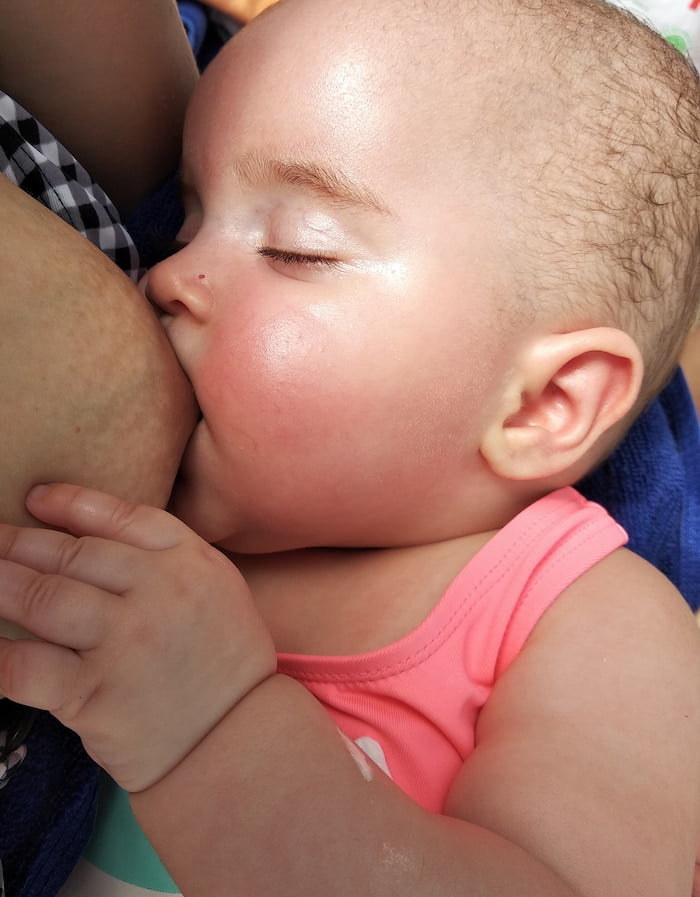
Baby food in Japan | Japan with a baby
It is clear that they also sell baby food there, we bought some, but unless you can read Japanese, we recommend you to carry it in your suitcase well protected in bubble wrap or vacuum bags, since the labels of the baby food in Japan are not in English, much less in Spanish. If you decide to carry them in your backpack, you have to take them out in the boarding area, otherwise they will make you go through the X-ray.
If your baby already eats some food, we recommend places with tatami mats because if the baby sits or stands holding on, the tatami mats are prepared for adults to sit on the floor, making it easier to watch and feed him or her, and he or she would have a relative dependency that babies love.






